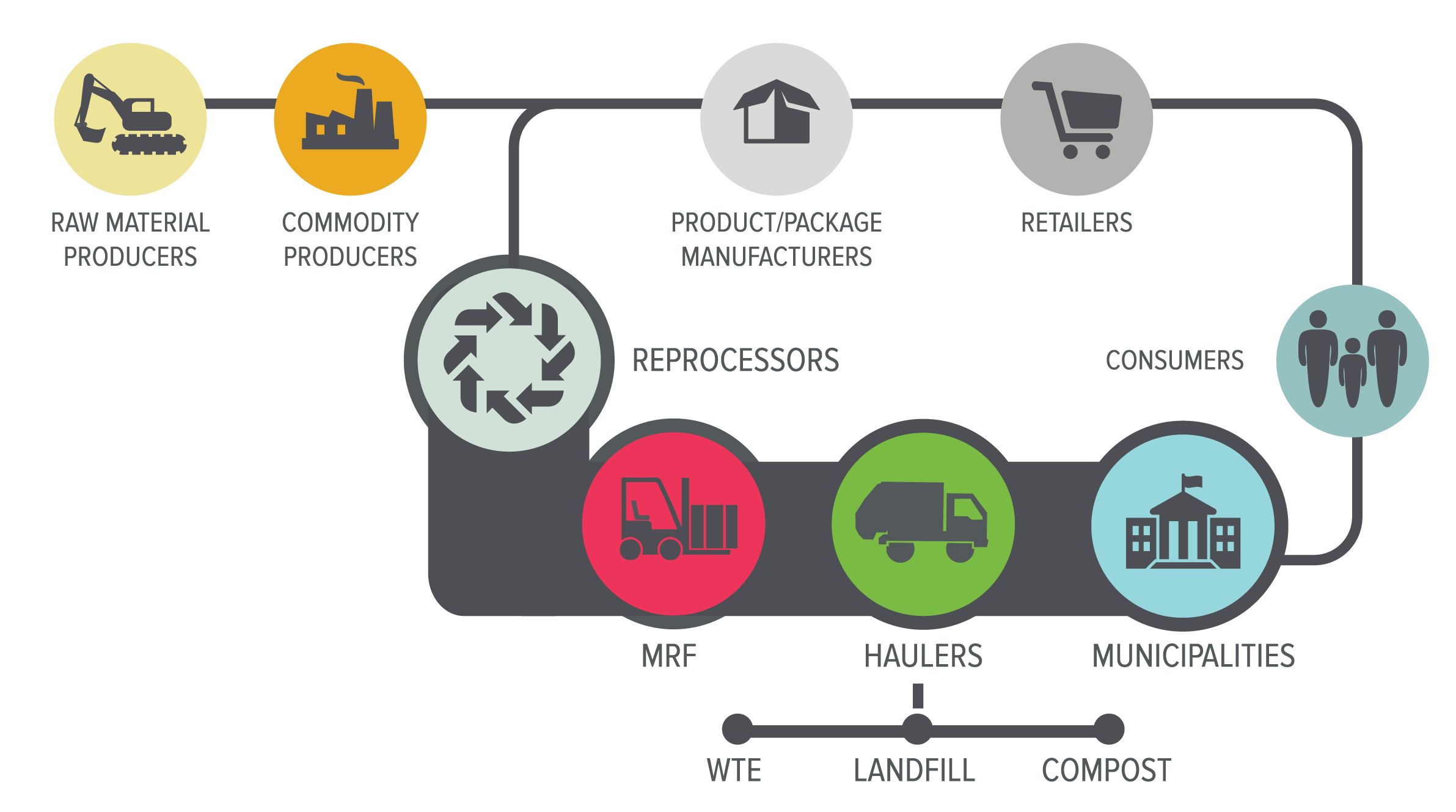Medical device standards, machine tool specifications, automotive emissions standards, ball bearing tolerances – there are process and production specifications that are standardized across most industries. They help to set consistent expectations for quality and performance in business-to-business commerce. The recycling supply chain here in the US could benefit from this common practice of mature industries of all types.
What about MRF bales?
There is a good foundation already. ISRI’s Scrap Specifications Circular, a world standard, identifies bale types with prohibitive material and outthrow tolerances. The Association of Postconsumer Plastic Recyclers (APR) also provides model bale gradings for various types of plastic commodities. However, both indicate to check with the buyer as many have different allowances.
Then we look at the fact that there isn’t a generally accepted systematic bale auditing or certification. Each buyer and/or mill has its own test protocols and enforcement, and these tend to ebb and flow with the price of the commodity and related demand. Let’s not forget the US recycling feedstock supply chain – it is managed on a community by community level and lacks national consistency in several areas including collection methodology, identification of material grades, equipment or material acceptance.
What does that do to the Material Recovery Facility (MRF)?
 Imagine being placed in a vise grip and feeling the pressure from both sides.
Imagine being placed in a vise grip and feeling the pressure from both sides.
Let’s take a look at the input side of the MRF. Our recycling system is community based – materials coming into the MRF are governed by local recycling program specifications and how well people are recycling.
“MRFs need to work with communities to ensure the best inputs to produce the highest quality output, while communities need to invest in education to ensure their citizens are recycling the right products and packaging,” stated Anne Johnson, RRS vice president of global corporate sustainability.
Anne continued, “MRFs don’t handle just one material type. MRFs allow the convenience of one bin recycling, and provide material sorting and cleaning, however. if one material contaminates another commodity bale, it impacts the MRF cost model, which is tied to throughput, bale quality and value.”
That brings us to the output side of the MRF. The MRF is selling these commodity bales to end markets. Various commodity buyers in the end market may have different quality specifications and therefore different price points – so MRFs are selling to end markets that aren’t consistent.
Anne points out, “The marketplace usually matches up buyers and sellers to deal with this, but it gets challenging when the price point of virgin materials and recycled feedstocks get really close. There is no room for poor performance.”
What does that do to the end market?
End markets typically want as little contamination as possible to avoid equipment damage, ensure cost-effective yields and quality next-life product.
“At this moment, virgin materials are competing or besting the price of recycled materials, plus virgin materials are for the most part consistent and predictable,” stated Anne. “If bale quality issues, including contamination and inconsistency, are added into the mix, the bale value drops and alternatives start to look that much more attractive.”
What does local recycling mean to national brands?
Although a company may be headquartered in one location, it may have many locations – retail, distribution, warehouse, etc. – scattered throughout the nation.
Anne stated, “To build a strong recycled feedstock supply system, national and even regional companies have to deal with the vagaries of local regulations and the values and habits of consumers in communities across the nation. Some really care about recycling and some not so much. It is difficult for a company to steward their product or packaging recovery when negotiations are on a community by community level.”
Difficult, but not impossible. Industries are working together more and more to address these challenges with “pre-competitive collective action”. For example, RRS works with the Carton Council of North America – a collaboration of several carton packaging companies – to increase access to carton recycling throughout the US making carton recycling a norm for programs across the country. In 2009, the level of access to carton recycling was hovering around the 18% mark. Through in-person contact from field representatives to industry and government leaders, incentives for capitalization of specialized equipment at MRFs, and education and outreach efforts to communities and their citizens, access has tripled across the country to 57.6%. The campaign is a few points away from the 60% threshold that will allow utilization of the unqualified phrase “recyclable” on carton packaging.
What’s Next?
Is more industry self-monitoring the answer? Do we need a certification and auditing process for commodity bale quality?
Anne Johnson concludes, “The recycling system and in turn, end markets would benefit if there was more consistency in the commodities produced. That is one of the advantages of the predictable consistency of virgin materials. For our recycled materials supply chain to be competitive, more self-monitoring of the industry to ensure quality is a step in the right direction. It would also help establish benchmarks around quality to help improve the resilience of the industry – and take a big step towards the circular economy of the future.”

